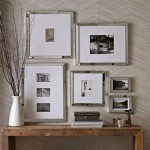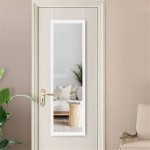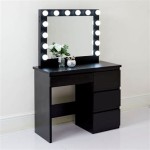How To Distress Mirror Glass
Distressing mirror glass involves creating an aged or antique appearance. This technique can add character and a vintage touch to decorative mirrors, furniture pieces, and art projects. Various methods can achieve different levels of distressing, from subtle antiquing to a heavily weathered look.
Essential Materials and Preparation
Before beginning the distressing process, gather the necessary materials and prepare the mirror surface for optimal results. Improper preparation can lead to uneven distressing or damage to the mirror.
- Mirror: The type of mirror impacts the distressing process. Thicker mirrors are generally easier to work with than thinner ones.
- Gloves: Protecting hands from chemicals and sharp glass edges is crucial.
- Eye Protection: Safety glasses or goggles prevent eye injuries from glass shards or chemical splashes.
- Drop Cloths or Newspaper: Covering the work area protects surfaces from chemical spills or glass debris.
- Cleaning Solution: A glass cleaner ensures a clean surface free of grease and dirt, allowing for even application of distressing agents.
- Soft Cloths: Lint-free cloths are essential for cleaning and applying chemicals.
- Distressing Agents: Options include etching cream, mirror effect paints, or antiquing solutions.
- Spray Bottle: A spray bottle helps apply some distressing agents evenly across the mirror surface.
- Painter's Tape: This helps create clean lines and patterns when desired.
Distressing with Etching Cream
Etching cream creates a frosted or etched effect on the mirror surface. This method creates a permanent alteration to the glass, allowing for a more authentic antique look.
- Thoroughly clean the mirror surface with glass cleaner and a soft cloth.
- Apply painter's tape to areas where the etched effect is not desired, creating patterns or borders.
- Following the manufacturer's instructions, apply the etching cream evenly to the exposed mirror areas.
- Allow the cream to sit for the recommended time. Over-etching can lead to excessive frosting.
- Thoroughly rinse the etching cream off the mirror with water, ensuring no residue remains.
- Remove the painter's tape to reveal the design.
Distressing with Mirror Effect Paints
Mirror effect paints allow for a more controlled and layered distressing effect. This method is suitable for those seeking a specific design or a less permanent alteration, as the paint can be removed with appropriate solvents if needed.
- Clean the mirror surface thoroughly.
- Apply a base coat of mirror effect paint in the desired color. Allow it to dry completely.
- Using a second color of mirror effect paint, apply a light, uneven coat over the base layer, creating a weathered appearance.
- A dry brush technique can be used for a more textured and aged effect.
- Allow the paint to dry completely.
- A sealant can be applied for added protection and durability.
Distressing with Antiquing Solutions
Antiquing solutions create a darkened, aged patina on the mirror surface. This method offers a subtler distressed look compared to etching cream.
- Clean the mirror meticulously, ensuring no dust or fingerprints remain.
- Apply the antiquing solution evenly across the mirror surface using a soft cloth or a spray bottle.
- Allow the solution to dry completely, observing the color change as it develops.
- For a more intense antique look, multiple layers can be applied, allowing each layer to dry before applying the next.
- A protective sealant can be applied to preserve the distressed effect.
Creating Specific Distressed Effects
Various techniques can create specific distressed effects beyond basic antiquing or etching. These techniques add depth and complexity to the distressed look.
- Spot Distressing: Applying small amounts of distressing agent to specific areas creates the illusion of age spots or water damage.
- Streaking: Dragging a cloth dipped in distressing agent down the mirror surface creates a streaked, weathered look.
- Layering: Applying multiple layers of different distressing agents or colors creates depth and complexity.
- Using stencils: Stencils allow for intricate designs and patterns to be etched or painted onto the mirror.
- Crackle Effect: Crackle medium can be applied before painting to create a crackled, aged surface.
Safety Precautions and Considerations
Working with chemicals and glass requires careful consideration of safety precautions to prevent injuries and ensure proper handling of materials.
- Always work in a well-ventilated area, especially when using chemicals.
- Wear appropriate protective gear, including gloves and eye protection.
- Dispose of chemical waste according to local regulations.
- Handle glass carefully to avoid cuts or breakage.
- Follow manufacturer instructions for all chemicals and materials used.
- If working with a large mirror, consider seeking assistance to avoid accidents.
Troubleshooting Common Issues
Certain issues may arise during the distressing process, and understanding how to address them is crucial for achieving the desired results.
- Uneven Distressing: This can result from improper cleaning or uneven application of the distressing agent. Ensure the mirror is thoroughly clean and apply the agent evenly.
- Over-Etching: Over-etching with etching cream can result in an excessively frosted appearance. Carefully follow the manufacturer's instructions regarding application time.
- Unwanted Streaks or Smudges: These can be caused by using a dirty cloth or applying the distressing agent unevenly. Use clean cloths and apply the agent in a controlled manner.
- Difficulty Removing Painter's Tape: Score the edges of the tape with a sharp blade before removing to prevent the paint from lifting.

Diy Antique Mirror Easy To Do And Looks Authentic My Creative Days

How To Antique A Mirror Easy No Scratching The Navage Patch

The Ultimate Guide On Diy Antique Mirrors So Much Better With Age

How To Antique A Mirror From The Front With Paint Average But Inspired

The Ultimate Guide On Diy Antique Mirrors So Much Better With Age

Diy Antique Mirror Easy To Do And Looks Authentic My Creative Days

How To Distress A Mirror

10 Tutorials On How To Antique A Mirror So Much Better With Age

How To Antique Mirror Using Paint Stripper And Bleach Decor Adventures

How To Antique A Mirror Easy No Scratching The Navage Patch








